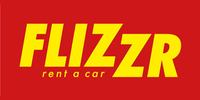Car Rental in Badajoz | Lowest Price Guarantee

Compare Prices and Book from the Top Car Rentals






Car Rental in Badajoz
An Introduction to the Allure and Opportunities of Badajoz

Welcome to Badajoz, a fascinating city located in the autonomous community of Extremadura in Spain. Rich in history and culture, Badajoz boasts a plethora of stunning architectural gems such as the Alcazaba ancient Moorish citadel, the beautiful Badajoz Cathedral and the grand Plaza Alta. Situated near the border of Portugal, Badajoz offers a unique blend of Spanish and Portuguese influences in its local cuisine and traditions.
If you prefer travelling by car, there are a myriad of nearby cities worth exploring. Located just an hour drive southeast, you'll find the city of Merida, famous for well-preserved Roman ruins including the amphitheatre and the Merida roman theatre. Head much further southeast and in approximately 2 hours, you'll arrive at the vibrant Seville, the capital of Andalucía, known for its flamenco culture and the iconic Plaza de España.
Alternatively, if you wish to experience the charm of neighbouring Portugal, a two-hour drive west will get you to Evora. This UNESCO world heritage city is steeped in history, with attractions ranging from the Roman Temple to the Giraldo Square and the Cathedral. Truly, Badajoz serves as a gateway to the magical world of Southern Iberian Peninsula that blends ancient and modern worlds harmoniously together.





